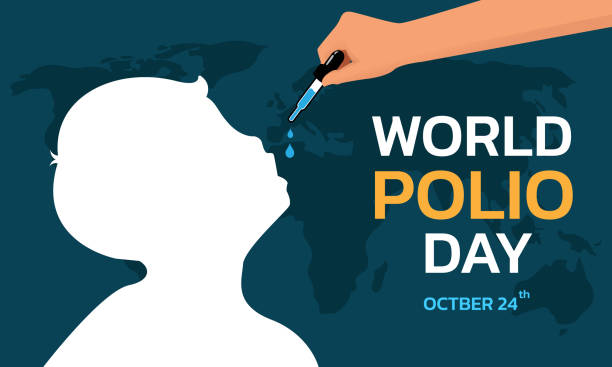
Polio and Its Vaccine
Polio, also known as poliomyelitis, is a highly contagious viral disease that primarily affects children under the age of five.
While polio has been largely eradicated in many parts of the world, it still poses a risk in certain regions, especially where vaccination rates are low.
This article will explore the history of polio and its vaccine, its symptoms and health complications, prevention methods, and ongoing global efforts to eliminate the disease.
What is Polio?
Polio is caused by the poliovirus, which can invade the nervous system and lead to paralysis or even death in severe cases.
The virus spreads through person-to-person contact, typically via the fecal-oral route or, less commonly, through contaminated food or water.
Once it enters the body, the virus multiplies in the intestines and can infect the nervous system, causing irreversible damage.
Symptoms and Complications of Polio
Most people infected with poliovirus do not show any visible symptoms.
However, for those who do, symptoms usually appear within 7–14 days and can range from mild to severe. Common symptoms include:
- Fever
- Fatigue
- Headache
- Vomiting
- Stiffness in the neck
- Pain in the limbs
In severe cases, the virus can attack nerve cells, causing paralysis in the legs, arms, or even the respiratory muscles, which can be fatal.
This severe form of polio, called paralytic polio, occurs in about 1% of infections. Among those who develop paralysis, 5–10% die due to the inability to breathe.
Polio can also lead to post-polio syndrome (PPS), a condition that affects polio survivors years after recovery.
PPS can cause muscle weakness, fatigue, and pain, significantly impacting the quality of life of individuals who had polio earlier in life.
The Importance of Polio Vaccination
Vaccination is the most effective way to prevent polio. The World Health Organization (WHO) has endorsed two types of polio vaccines:
- Inactivated Poliovirus Vaccine (IPV): IPV is injected and provides immunity in the bloodstream, protecting the individual from paralysis. It is safe and effective, especially in areas where polio has been eradicated.
- Oral Poliovirus Vaccine (OPV): OPV is administered orally and is more cost-effective than IPV. OPV not only protects the individual but also reduces transmission, making it ideal for areas where polio is still circulating.
Most countries including Kenya, use a combination of these vaccines, but the choice depends on local polio eradication status, infrastructure, and resources.
Immunization campaigns are critical in protecting communities, especially children, from poliovirus infection.
Global Efforts to Eradicate Polio
Efforts to eliminate polio began in earnest in 1988 when the Global Polio Eradication Initiative (GPEI) was launched.
The GPEI, led by organizations such as WHO, UNICEF, the U.S. Centers for Disease Control and Prevention (CDC), and Rotary International, aimed to eliminate polio worldwide by providing mass immunization to children in areas at risk.
Since then, the world has seen a significant decrease in polio cases, with only two countries, Afghanistan and Pakistan are still reporting wild poliovirus cases.
In recent years, challenges such as vaccine hesitancy, conflicts, and population displacement have affected eradication efforts.
However, initiatives like National Immunization Days (NIDs) and Sub-National Immunization Days (SNIDs) continue to ensure that children receive vaccines.
These mass immunization events have helped protect millions of children from polio, bringing the world closer to eradicating this debilitating disease.
How You Can Help Support Polio Eradication Efforts
Supporting polio eradication efforts can help protect children and prevent the disease from spreading. Here are some ways to get involved:
- Advocate for Vaccination: Spread awareness about the importance of vaccinating children against polio and other preventable diseases. Educating communities about the safety and benefits of vaccines is essential in building trust and acceptance.
- Donate to Polio Eradication Initiatives: Contributing to organizations like WHO, UNICEF, or Rotary International can directly support immunization programs and health workers in regions where polio remains a threat.
- Stay Informed and Share Information: Follow reputable sources for updates on global polio eradication efforts and share accurate information with others.
The Path Forward: A Polio-Free World
Although the world has made remarkable progress in eradicating polio, there is still work to be done to eliminate the disease entirely.
Eradicating polio requires sustained efforts, particularly in countries where the virus is still circulating.
With consistent vaccination campaigns, robust health infrastructure, and community support, the dream of a polio-free world is achievable.
In Summary
Polio remains a global health issue that underscores the importance of vaccination and international cooperation
. Understanding the symptoms, transmission, and prevention of polio is crucial in supporting eradication efforts and protecting future generations.
The ongoing commitment to eradicating polio worldwide, coupled with your support, can make a difference in reaching the goal of a polio-free world.







